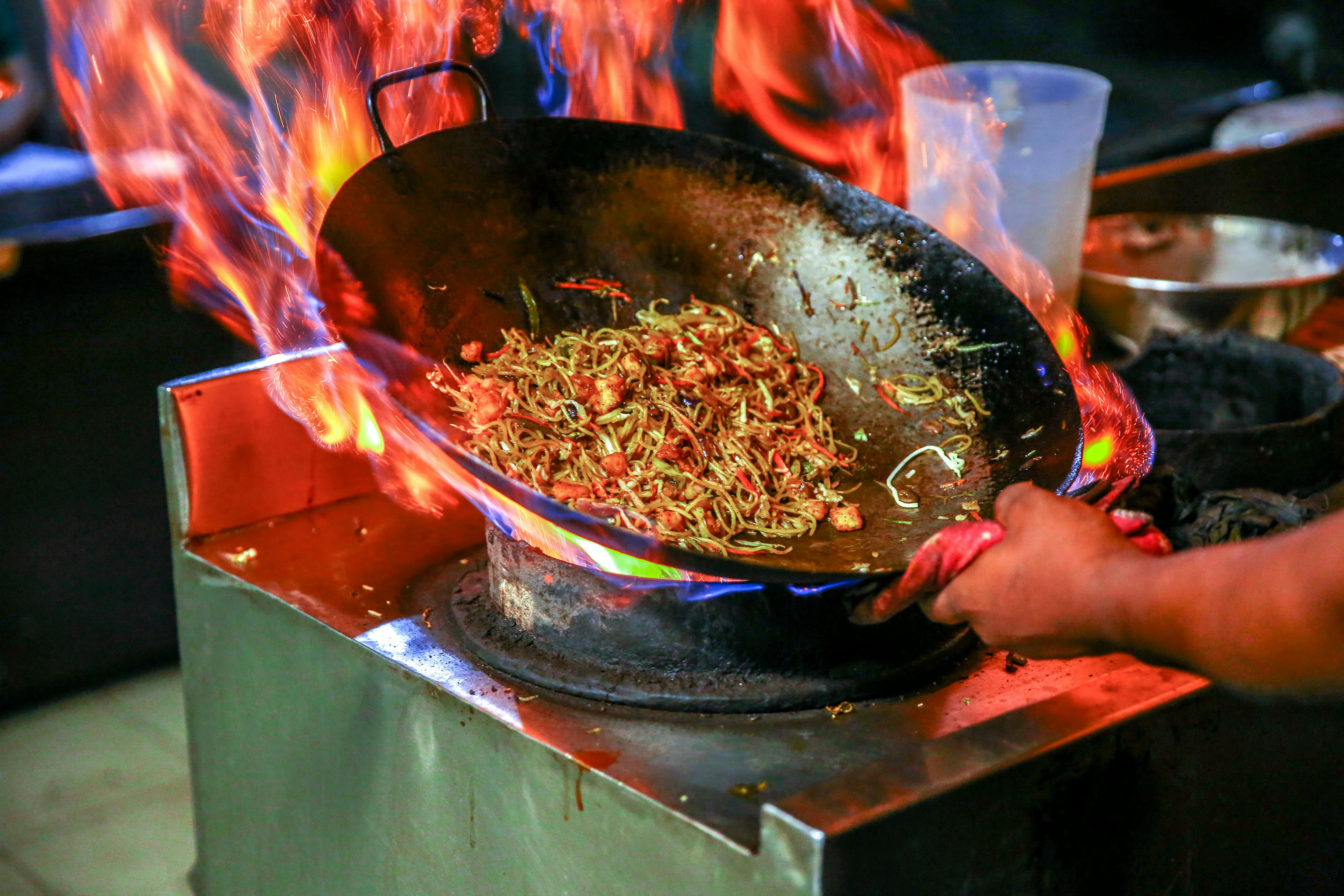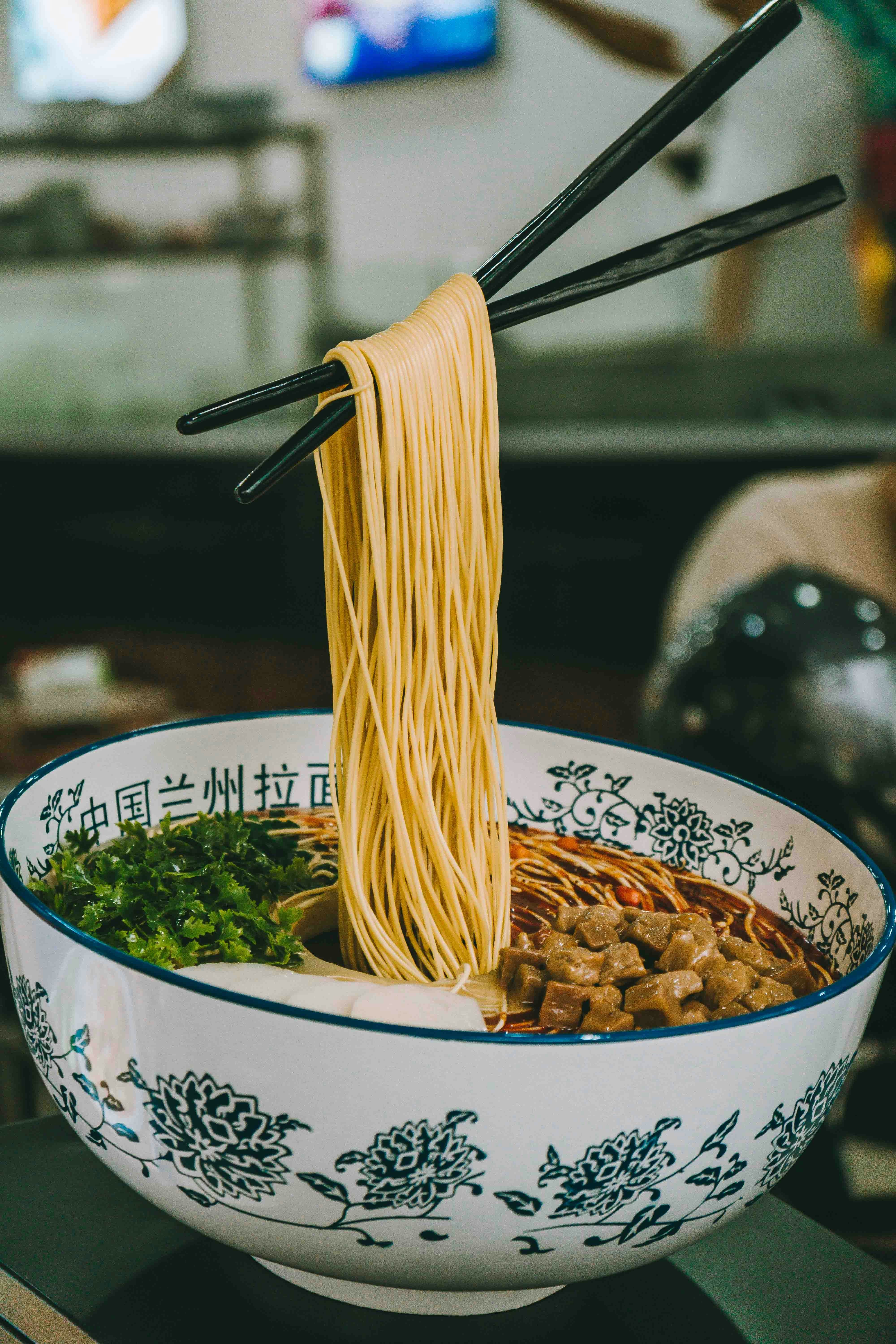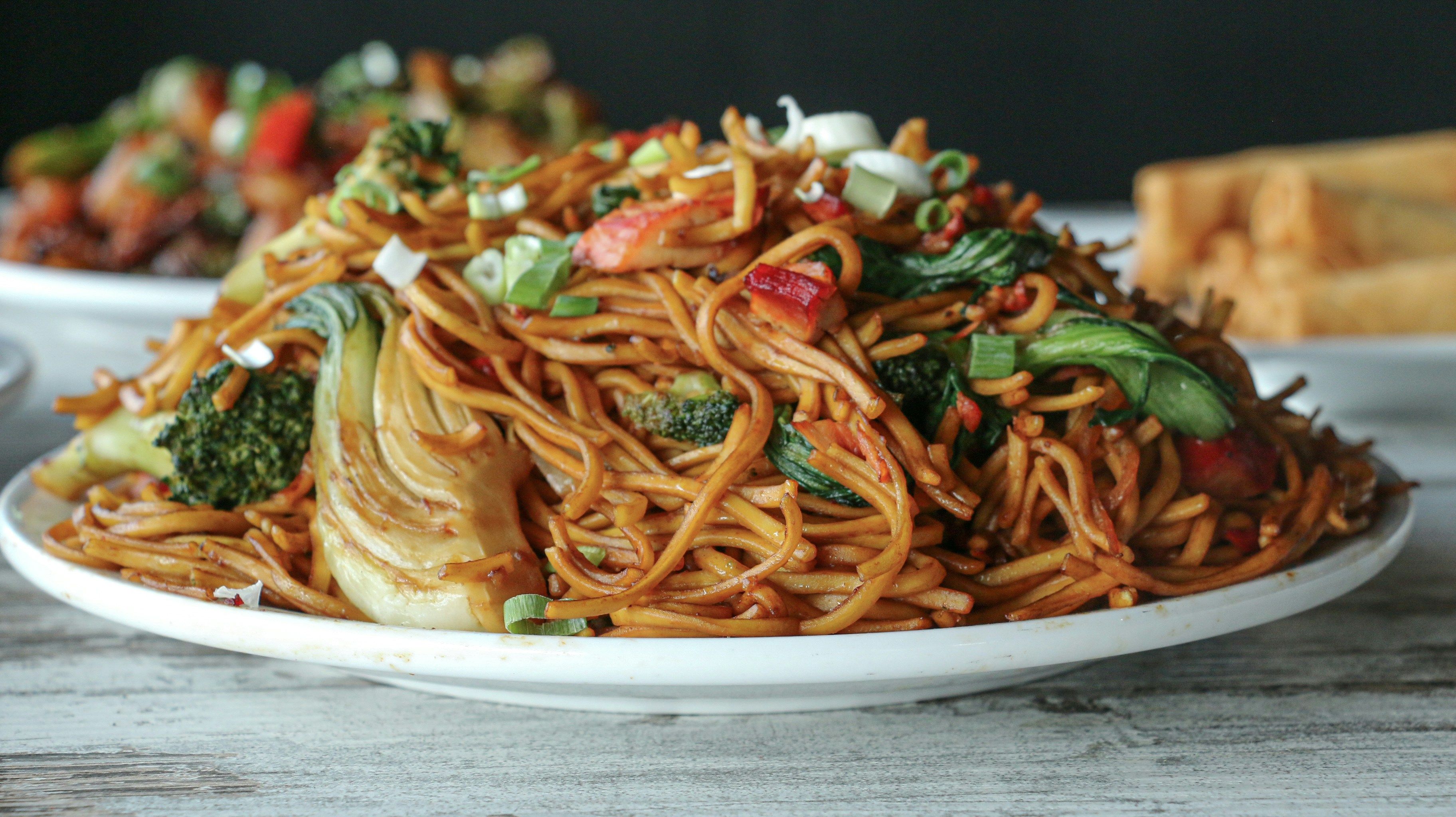Introduction: Wok Material Selection in Chinese Cuisine
In traditional Chinese cooking, the wok is the essential tool for achieving "wok hei" — the smoky aroma and intense heat that locks in moisture and flavors, giving dishes their signature charred depth. The choice of wok material significantly impacts heat control, oil usage, and nutrient retention. Whether in professional kitchens or home cooking, selecting the right wok material affects not only cooking efficiency but also the final taste and healthiness of the meal.
1. Carbon Steel Wok
Material Characteristics:
Low carbon content (0.02%-0.04%), thin thickness (1.2-2mm), extremely fast heat conduction, can reach 300°C in 3 seconds.
No coating, forms natural oil membrane for non-stick surface through "seasoning."
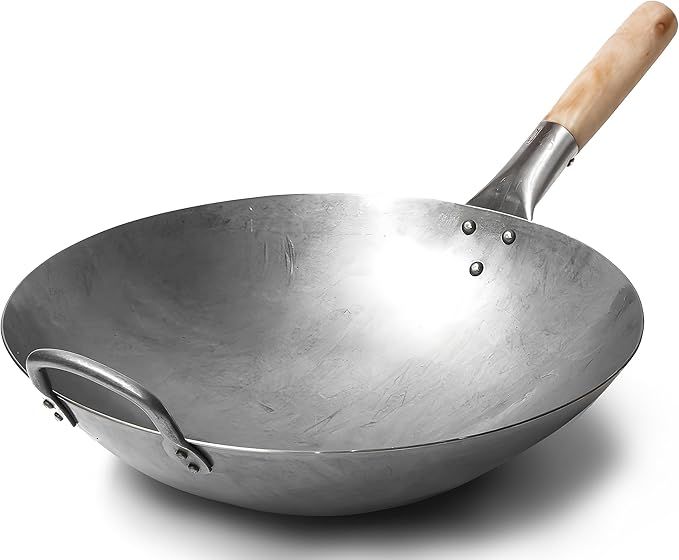
Suitable Dishes:
Dry-fried beef noodles, Kung Pao chicken, quick-fried kidney (classic dishes relying on "wok hei").
Pan-fried fish, tofu (hot pan cold oil method prevents skin breaking).
Advantages:
Heat-resistant and durable, ideal for professional high-heat stoves.
Becomes more non-stick over time; no extra oil needed for scrambled eggs after long seasoning.
Notes:
Must be dried and oiled after daily cleaning to prevent rust.
Avoid acidic broths (e.g., tomato stew) to protect the oil membrane.
2. Cast Iron Skillet
Material Characteristics:
High carbon content (2%-4%), thick (3-5mm), excellent heat retention but slow heat conduction.
Rough surface, requires long-term seasoning to form oil membrane.
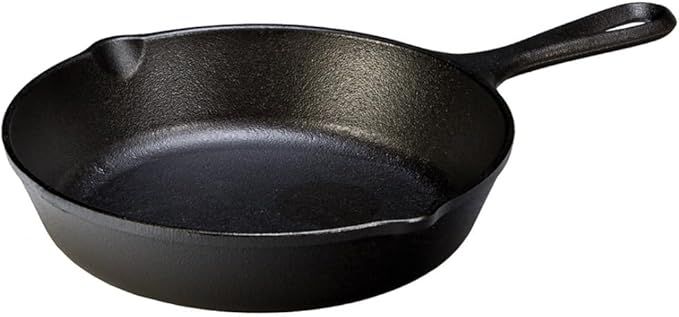
Suitable Dishes:
Fried dough sticks, crispy pork (stable temperature, less heat loss).
Dry-fried green beans, "Di San Xian" (even heat prevents burning).
Advantages:
Excellent heat retention, suitable for continuous heat cooking.
Low fire control requirements, ideal for beginners.
Notes:
Heavy (3kg+), difficult to toss, usually used on fixed stoves.
Start with cold oil and cold pan to avoid cracking from sudden heat.
3. Non-Stick Pan (Coated Pan)
Material Characteristics:
Aluminum alloy base with Teflon or ceramic coating.
Moderate heat conduction, relies on coating for non-stick properties.

Suitable Dishes:
Shrimp scrambled eggs, stir-fried vegetables (reduces oil use).
Pancakes, fried eggs (avoids high heat damaging the coating).
Advantages:
Easy to operate, suitable for kitchen novices or health-conscious users.
Easy to clean, no complex maintenance required.
Notes:
Avoid metal spatulas or steel wool; replace immediately if coating peels.
Oil temperature must stay below 250°C (stop heating before smoking).
4. Titanium Pan
Material Characteristics:
Pure titanium metal, lightweight, corrosion-resistant, no coating.
Even heat conduction, but slower heating than carbon steel.
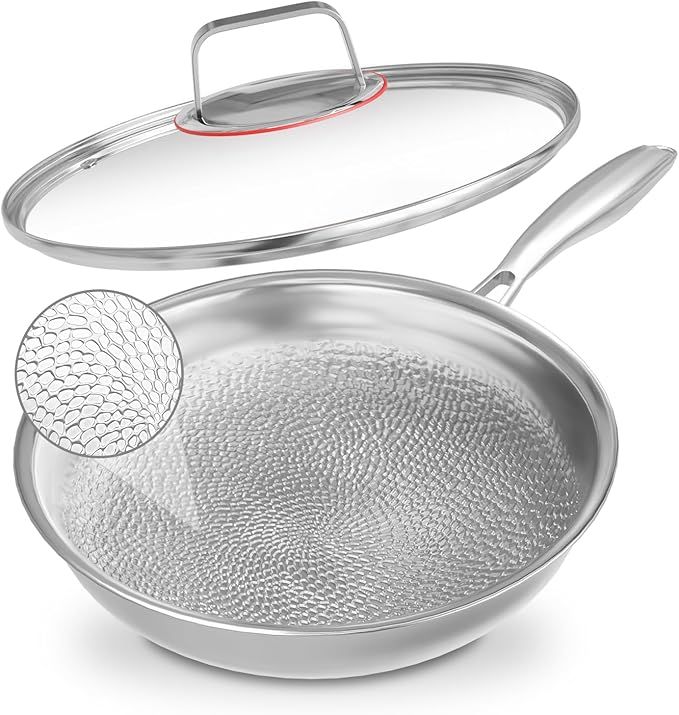
Suitable Dishes:
Stir-fried squid, garlic stir-fried water spinach (no metal leaching risk).
Low-oil pan-fried chicken breast, stir-fried asparagus (ideal for fitness meals).
Advantages:
Chemically stable, no reaction with ingredients, high safety.
Lightweight design, easy for women or home users to handle.
Notes:
Expensive, requires silicone spatula use.
May stick slightly initially; requires a break-in period.
5. Stainless Steel Composite Pan
Material Characteristics:
Multi-layer structure (stainless steel + aluminum core), even heat conduction but slow heating.
No coating, resistant to acid and alkali corrosion.
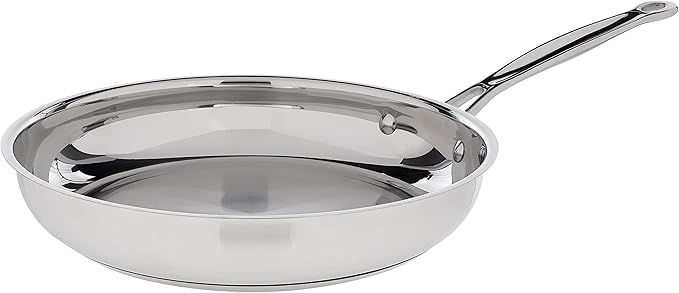
Suitable Dishes:
Black pepper beef, Kung Pao chicken (resists sticking).
Olive oil pan-seared salmon, creamed vegetables (precise temperature control).
Advantages:
Dishwasher-safe, ideal for modern kitchens.
Durable, long service life.
Notes:
Requires full preheating (water droplets bead up) before oiling; otherwise, it may stick.
Not suitable for traditional high-heat stir-frying; insufficient fire may produce excess liquid.
6. Copper Pot (Niche High-End Choice)
Material Characteristics:
Tin-plated copper interior, heat conduction speed is twice that of iron, precise temperature control.
Aesthetically appealing but requires regular polishing to prevent oxidation.
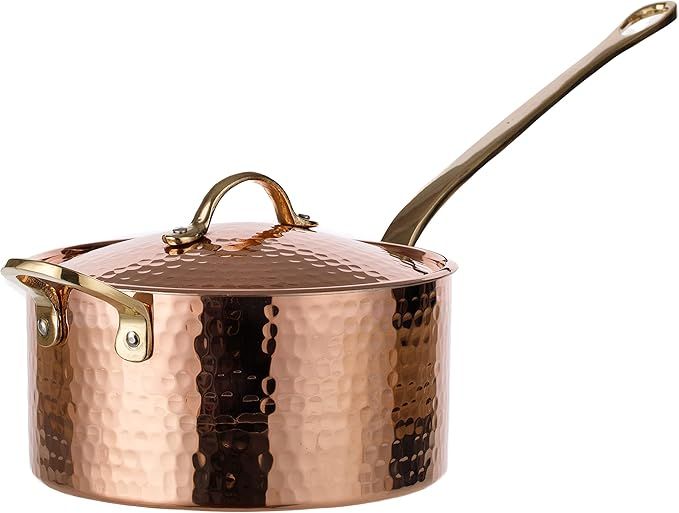
Suitable Dishes:
"Wen Si Tofu Soup," sweet and sour pork (prevents burning).
Braised pork, rock sugar ribs (even caramelization reactions).
Advantages:
Ideal for molecular gastronomy or high-end plating.
Fast heat conduction, reduces moisture loss in ingredients.
Notes:
Extremely expensive , requires meticulous maintenance.
Avoid metal tools to prevent scratching the plating.
Material Comparison and Selection Guide
| Material | Heat Conductivity | Healthiness | Suitable Scenarios | Representative Dishes |
|---|---|---|---|---|
| Carbon Steel Wok | ★★★★★ | No Coating (Safe) | Professional Stir-Frying, High-Heat Searing | Dry-Fried Noodles with Beef, Twice-Cooked Pork |
| Cast Iron Wok | ★★☆ | No Coating (Safe) | Deep-Frying, Dry-Frying | Fried Dough Sticks, Dry-Fried Mixed Vegetables |
| Non-Stick Pan | ★★★☆ | Coating Requires Caution | Low-Oil, Low-Temperature Cooking | Shrimp Scrambled Eggs, Fried Eggs |
| Titanium Wok | ★★★★ | No Coating (Safe) | Healthy Light Meals, High-Heat Stir-Frying | Garlic Bok Choy, Stir-Fried Seafood |
| Stainless Steel Pot | ★★★☆ | No Coating (Safe) | Sauces, Fusion Western Dishes | Black Pepper Beef, Creamy Boeuf Bourguignon |
| Copper Pot | ★★★★★ | Requires Coating Maintenance | High-End Precision Dishes, Sugar Caramelization | Fish Maw Shredded Tofu, Braised Pork in Brown Sauce |
Conclusion: How to Choose a Wok Based on Needs
For Ultimate Wok Hei: Carbon steel woks are the top choice for chefs due to their rapid heat conductivity and natural non-stick oil membrane.
Health and Safety First: Titanium or stainless steel composite woks are coating-free and chemically stable, ideal for health-conscious users.
Beginner-Friendly: Non-stick pans are easy to use and clean but require careful temperature control and coating maintenance.
High-End Precision Cooking: Copper woks offer precise heat control, perfect for caramelization and molecular gastronomy, though they are expensive and require meticulous care.
Classic Durability: Cast iron woks retain heat well for frying and dry-frying but are heavy and slow to heat up.
Regardless of the material chosen, regular maintenance (e.g., seasoning carbon steel woks, polishing copper) is crucial for longevity. Understanding the properties of different materials allows you to master stir-frying, deep-frying, and braising, truly capturing the essence of Chinese cuisine.
